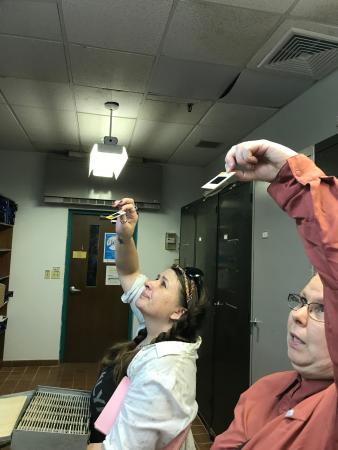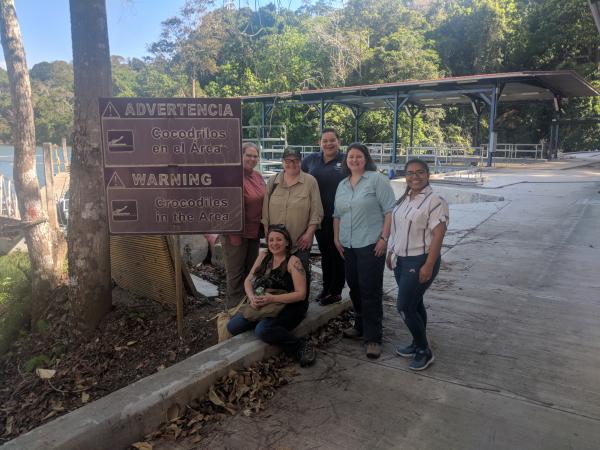As you may have seen on our Twitter feed, four of our staff recently visited the Smithsonian Tropical Research Institute (STRI) in Panama. Our crew consisted of Acting Director Tammy Peters, Digital Archivist Lynda Schmitz Fuhrig, Photo Archivist Marguerite Roby, and myself (Archives and Information Management Team Leader). While Panama is a great vacation spot, we were there on a mission—to provide records and information management outreach in order to ensure that active records are safeguarded, and historically and legally valuable inactive records are properly preserved.

We have traditionally relied on a few key individuals at STRI to make the connection between staff with historical materials and the Archives. Unfortunately, with eleven facilities throughout Panama and hundreds of staff, we were only able to address the tip of the iceberg, resulting in many gaps in our collections. We needed to establish a better system. For this trip, we took a two-pronged approach to accomplishing our mission by focusing both on group presentations and individual meetings.
Group presentations allowed us to reach a large number of individuals at one time. We discussed what we do, what we collect, how to use the records disposition schedule, how to manage email, how to send materials to the Archives, and how to find and access them after they have been transferred. We also provided demonstrations of some of the systems we use.

We gave three formal presentations. One was a general presentation appropriate for all staff, regardless of job function. The other two were intended for scientific staff and were given on two separate days at two different facilities. These presentations were similar to the general presentation, but included additional information about topics such as research data and digital asset management. The presentations were timed to coincide with regularly scheduled meetings and lectures so that it was more likely staff would be available to attend. The presentations were also webcast, allowing us to reach a large number of staff, including those outside of Panama City.
Individually, we estimate that we spoke with about sixty staff and visiting researchers individually or in small groups at seven of STRI’s facilities. Many of these meetings were planned. Others were impromptu meetings after the presentations or casual records-related conversations in the cafeteria and even the elevator. These conversations allowed us to learn about the work of individuals and the records they create. We also had the opportunity to provide personalized records management advice and guidance.

Most importantly, these meetings allowed us to establish relationships with a large number of individuals across many departments and facilities and at all stages of their careers. Personal contact often helps promote trust and collaboration. Staff may also be more likely to reach out to the Archives for guidance or to transfer archival materials if they or their colleagues have previously been in contact with us. Casting such a wide net, as well as establishing additional official collaborations with the STRI central administration and the Library, should create many channels between STRI and the Archives and result in more conversations and a wider variety of archival materials might be transferred.

We found the STRI staff to be very warm and welcoming. In general, they are eager to preserve and make accessible their research and the history of STRI and Panama. Many of their paper files, and those of their predecessors have been tucked away at STRI for safekeeping and many of their digital files are backed up in creative ways. The Archives has simply provided staff with additional options for accomplishing what they are already doing.
Did we achieve our mission? It’s too early to tell. But we’ve laid a great foundation.
Related Resources
- Smithsonian Tropical Research Institute, Smithsonian Institution Archives
- How to Fit a Forest into Five Boxes, by Megan Raby, The Bigger Picture, Smithsonian Institution Archives
- There Are Records and Then There Are Records, by Jennifer Wright, The Bigger Picture, Smithsonian Institution Archives
- How the Archives Gets its Records (or, Golden Lion Tamarins Galore),by Jennifer Wright, The Bigger Picture, Smithsonian Institution Archives
- Records Management, Smithsonian Institution Archives
Produced by the Smithsonian Institution Archives. For copyright questions, please see the Terms of Use.

Leave a Comment